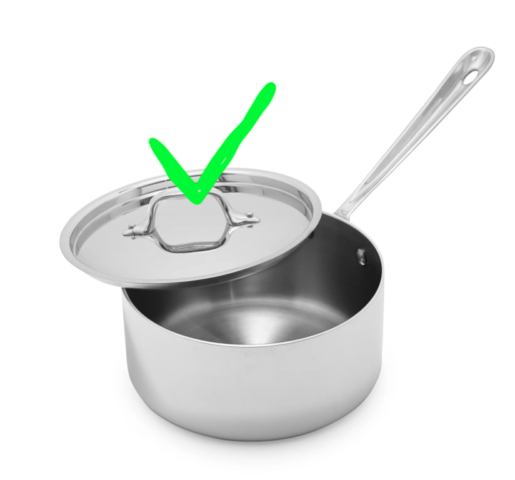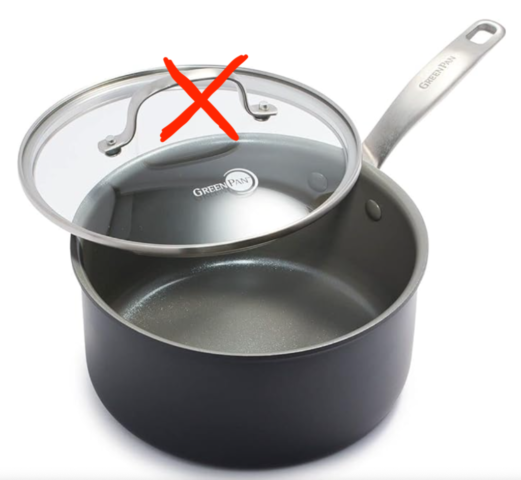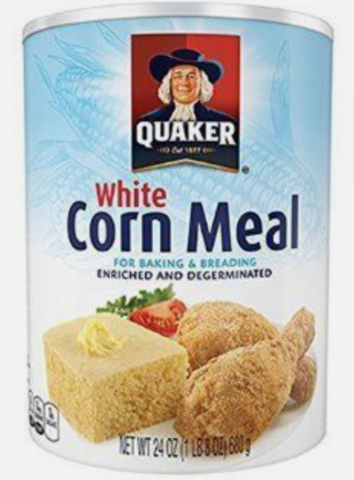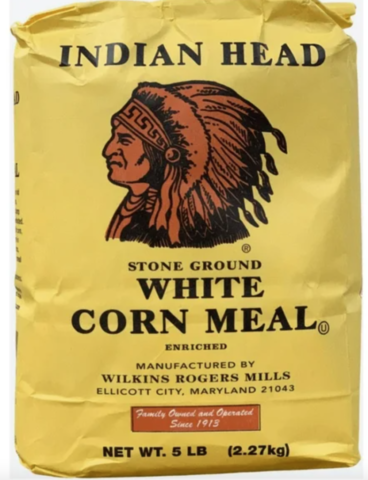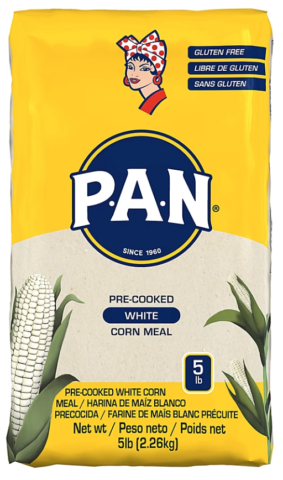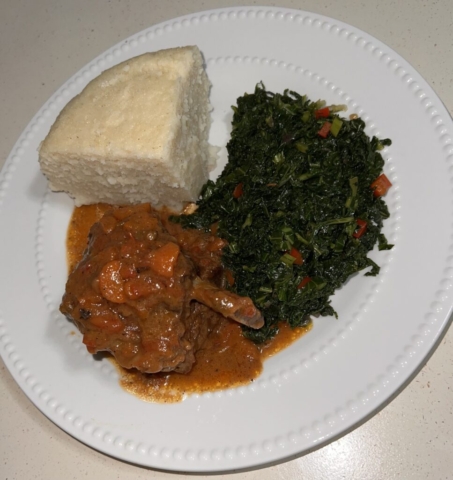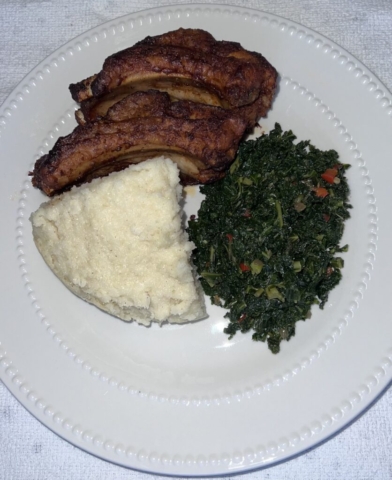This post may contain affiliate links, which means I may receive a commission from purchases made through the links.
Ugali is the most common staple in East Africa. It is a starchy dish that is made from different types of flour including corn, cassava, millet, and sorghum. The majority of Kenyans, Ugandans, and Tanzanians consume this dish almost daily. Other countries in the region, e.g., Rwanda, Burundi, and the DRC, as well as southern African countries, consume it as well albeit with some variations in the name and how it is made. In this article, I share information and personal anecdotes regarding making ugali in America that could be useful to anyone who enjoys it like I do, or someone who wishes to try it for the first time.
How do I cook Ugali in America?
To cook ugali in America, you will first need to find a suitable cooking pot and a strong wooden spatula, known in Swahili as ‘mwiko’. You can find these in the kitchen essentials section of any large grocery store chain like Walmart. Now, if you are a pro at making ugali, you will probably agree with me that ugali does not do so well in non-stick pots. While almost every recipe out there calls for non-stick pots and pans, ugali actually needs the opposite – a ‘stick’ pot that will hold the crust of the ugali as you cook it (in Kenya, this crust has very funny names depending on the community one comes from, but I will reserve that conversation for another day). So, my recommendation is that you go for the stainless-steel pots for ugali and reserve the lovely non-stick ones for stews.
A wooden spatula
As for the wooden spatula, you will just have to make do with what is available here in the US (unless, of course, you decide to transport a stronger mwiko all the way from home. I have heard stories of people bringing over some hilariously unexpected items). Once you’re all set with the equipment, the next step is to find the best ugali flour.
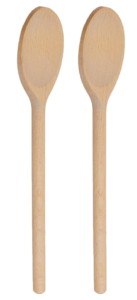
Which is the best brand of Ugali flour in America?
I have come a long way in searching for the best corn flour to make ugali in America.
Quaker Corn Flour
When I first arrived, my host, a fellow Kenyan, introduced me to the Quaker brand of white corn flour. I used that for several years but couldn’t help feeling that it was a little too coarse for my liking. I did not know of any other options, so I stuck with it. The Quaker brand carries yellow corn flour as well but that is just awful for Ugali. I would not recommend you get that.
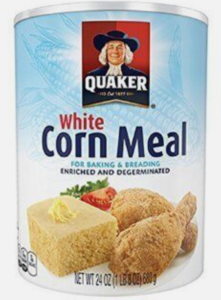
Indian Head Corn Flour
With time, I discovered the Indian Head brand of corn flour through a Tanzanian friend who had invited us for dinner. I found this brand to be much better than Quaker since it was less coarse. Its ugali held together so well. I immediately switched to buying the Indian Head flour until I incidentally came across PAN white corn flour, which is by far the best brand I have come across.

P.A.N Corn Flour for Best Ugali in America
The PAN flour is much finer, and it gives you the smoothest, most perfect ugali. From what I learned; PAN flour is mainly used to make arepas. Arepas are a type of Hispanic food that is quite similar to ugali, except they are savory. The dish is a staple in several Latin American countries, especially Columbia and Venezuela. If you prefer coarse flour for ugali, then PAN is not for you. If you are looking for a texture that is neither too coarse nor too fine, then you can mix any of these brands of flour to achieve your desired texture. For instance, I would mix PAN with Quaker or Indian Head if I was running out of PAN and could not find more in stock immediately. That way, the flour would last longer as I waited to get more. Next, let’s talk about where you can purchase this flour.
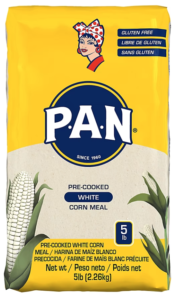
Where can I find Ugali flour in America?
We will start with my favorite brand, the PAN flour. I believe this flour is available in many parts of the US because when I first came across it, it was in a Publix store in Florida. Now, I live in the mid-west, and I have always found it in Kroger and very recently, in Meijer. When it is out of stock in my local stores, I order it from Amazon. This brand of flour runs out of stock quite frequently from my experience. Both online and in-store (probably because it is just so good so everybody grabs as many packets as they can every time they make a purchase).
Next is the Quaker brand of corn flour. This one is very popular across the country as it is used in breading and baking (which explains the coarseness). As such, you can almost be sure to find it in any grocery store. At least I have found it everywhere (Meijer, Kroger, Walmart, etc.) here in the mid-west. It hardly ever runs out of stock although a few times, the white flour could go missing and like I warned earlier, the yellow flour is not good for ugali. Check the next store if you don’t find it in the first one. As for the Indian Head brand, I have bought it in grocery stores as well as from Amazon.
The small, non-American stores
Note that you can also find these brands of corn flour and even more options in your local non-American stores. Check if there is an African, Mexican, Caribbean, or Indian store near you and go peruse their isles. You will be surprised by what you will find. Some of these small stores sell flour brands from back home like Jogoo, which is a popular brand in Kenya. Besides, you could also find things like tea leaves, Blue Band, and other Kenyan foodstuff in those stores. Moving on, after you fix the ugali problem, what serving options do you have?
What do I serve with Ugali?
When living in a foreign country, so far away from home that you cannot simply call home and be like, “Send it to me via Easy Coach,” (‘it’ in this case being smoked chicken, dried fish, or anything else that our sweet parents spoil us with while we live in the city), you must make do with what is available. This means getting creative enough to whip up meals that are very close to what our palates were used to back home (that’s where ugali comes in). Otherwise, you risk feeling very homesick, especially if you are new in America. As I discuss in this article, American cuisine can be confusing as well as intimidating to newcomers, which could only make homesickness worse.
Also, American meats, vegetables, and many other foodstuffs are generally different, for instance, from Kenyan food. The meats here are much tender, the kale is of a different variety (curly kale), and the collard greens, which look more like the Kenyan kale, have a much tougher texture and a different taste. With that said, you have access to all the ingredients that you would need to create Kenyan dishes in America. You can make meat stews, grilled meat (nyama choma!), sauteed vegetables (sukumawiki, cabbage, Swiss chard – known as spinach in Kenya, etc.)
Adding your own little twists to the recipes
You can add your own little twists here and there to improve on the flavors of your dishes as I do in the following recipes: (1) short ribs stew, (2) chicken stew with coconut milk, (3) baked pork ribs, (4) sautéed kale, (5) sautéed cabbage with carrots and bell peppers, and (6) sautéed kale with eggplant and carrots. You can also bake or air fry any meat for a change. The bottom line is getting creative so that you have enough variety and authentic taste in your meals. Do not get stuck to eating one type of meal over and over. About that, take a look at this article on how to make chapati in America, and this recipe for soft chapati so you can widen your options even more.
Conclusion
Whether you are new in America, you’ve been here much longer, or you are a native of this country, we could all always use a new idea. I hope that this article benefits you in some way and that you fall in love with the recipes recommended herein. Now, I’d also love to hear your tips and tricks for surviving in a foreign land. Post in the comment section below.

